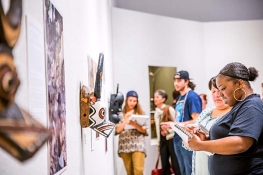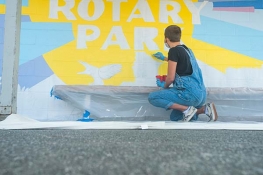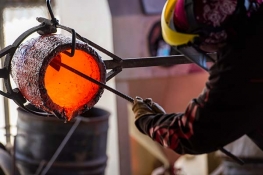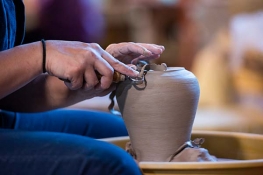Third Street Gallery archive: 2014 Exhibitions: THE SPIDER AND THE FLY: Works by Gail Wight
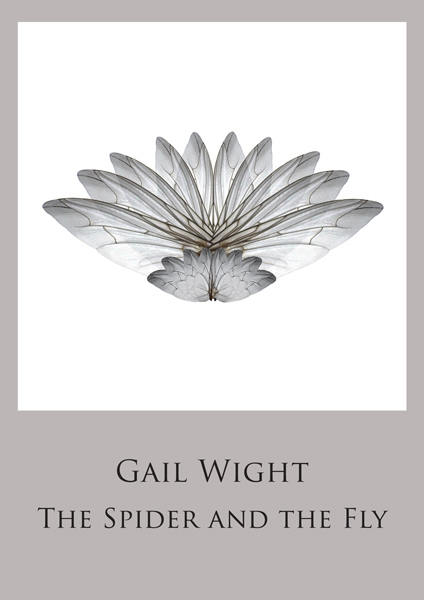
Humboldt State University’s First Street Gallery presents, The Spider and the Fly, a collection of prints and mixed media drawings by artist Gail Wight on display April 1 to May 18. Currently a Professor of Art at Stanford University, Wight’s work has earned her national and international recognition in solo and group exhibitions.
Wight is inspired by the natural world and the way that it is perceived by humanity. She depicts human, animal, plant and other species in order to reveal the patterns and effects of biological convergence. Sculpture, video, interactive media and print are Wight’s primary mediums, which she liberally uses to explore themes of evolution, art, biology, cognition and animal sentience. Recently her work has focused on the concept of time, unlocking the desire for a better understanding of the unknowable past.
The combination of scientific and philosophical approaches in her mixed-media work connects ideas about so-called reality and the subconscious. Her art explores the dynamism between nature and human innovation, using new technology and unique methods that reinvent traditional approaches in making visual art.
Wight’s work re-examines human perceptions, concepts of science and nature through the creation of a variety of experiments, physical objects, and performances. The current exhibition at HSU First Street Gallery includes, Solar Burn, aseries inspired by scientific experiments done in the 1940s in which spiders were given a variety of drugs and then released to spin their drug-influenced webs. In an uncanny fashion, the spiders, through their spider web designs, expressed the unique effects of the drugs they were a given. Using a magnifying glass and light, Gail Wight burns the line of their intricately woven patterns (made under the influence of such drugs as caffeine, marijuana and LSD) into translucent paper. In some places along the line of the drawings, a small hole may randomly burn through the paper, which allows a refraction of light to pass through. When hung before a light source, the pieces achieve high visual interest as they spectrally divide the light passing through the drawings. The resulting pieces describe, in a mimetic fashion, the altered state that the respective drugs may induce. The drawings alternatively remind us of how science is often manipulated in service of ideology.
In the artist’s most recent digital prints, which are presented in this exhibition, she creates intricate, floral-like images using composite scans of fly wings and insect parts, resulting in playful, intricate depictions of complex of organic phenomena.
Gail Wight will present a lecture and slide show about her work at Humboldt State University on Friday, April 4 at 5 p.m. The lecture will be held in Room 102 in the Art Department building on the Humboldt State Campus. This event is free to the public. A reception for the artist will be held at HSU First Street Gallery on Saturday, April 5 from 6:00 p.m. to 9:00 p.m. during Eureka’s monthly Arts Alive program. The event is free and open to the public. The gallery is open Tuesday through Sunday from 12 to 5 p.m. and is located at 422 First Street in Eureka, California. Admission is free. Those planning group tours are encouraged to call ahead. For more information call 707-443-6363.
Working primarily in sculpture, video, interactive media and print, I attempt to construct biological allegories that tease out the impacts of life sciences on the living: human, animal, and other. The interplay between art and biology, theories of evolution, cognition and the animal state-of-being are themes that have, over the last two decades, become central to my art. Recently, my imagination has fixed on the topic of deep time. I find myself craving a better understanding of the unknowable past. What were the sounds and smells of the Mesozoic? What was it like to rock back and forth in a Cambrian sea? I look at the ground differently as I walk, feeling time receding miles below its surface. I try to imagine ancient shorelines in desert patches and swamps covering barren plateaus. It seems so relevant, speeding along a freeway constructed of pulverized river beds and seashells. I’m looking for prolonged chords, where the deep past resonates in the present.
The fossil record for insects dates back approximately 400 million years. Often, when I find an expired fly on my studio windowsill, I’m comforted by the knowledge that these small creatures will most likely be glancing their way around spider webs long after the human-centric environment outside my window has disappeared. There’s a lovely concept in biology called “convergence”, which attempts to explain the emergence of similar characteristics among vastly different plants and animals. In The Spider and the Fly, I toy with the visual manifestations of convergence, and hint at potential psychological similarities.
BIO
Gail Wight holds an MFA in New Genres from the San Francisco Art Institute where she was a Javits Fellow, and a BFA from the Studio for Interrelated Media at Massachusetts College of Art. Her exhibition record includes over a dozen solo exhibits throughout North America and Great Britain, and her work has been collected by numerous institutions including the Museum of Modern Art in New York, Yale University, and Centro Andaluz de Art Contemporaneo, Spain. Among her many artist residencies are western Australia’s Symbiotica, Art & Archaeology at Stonehenge, the Rockefeller Foundation in Bellagio, and San Francisco’s Exploratorium. Wight is an Associate Professor in Stanford University’s Department of Art & Art History, where she directs Experimental Media Arts in the Art Practice program. Her work is represented by Patricia Sweetow Gallery in San Francisco.
